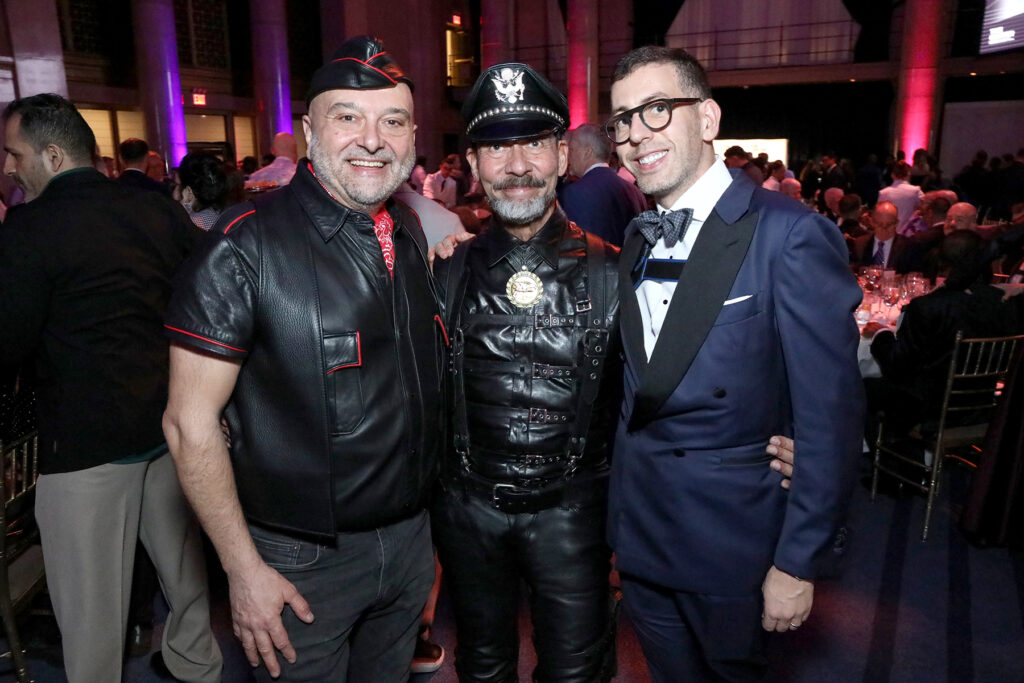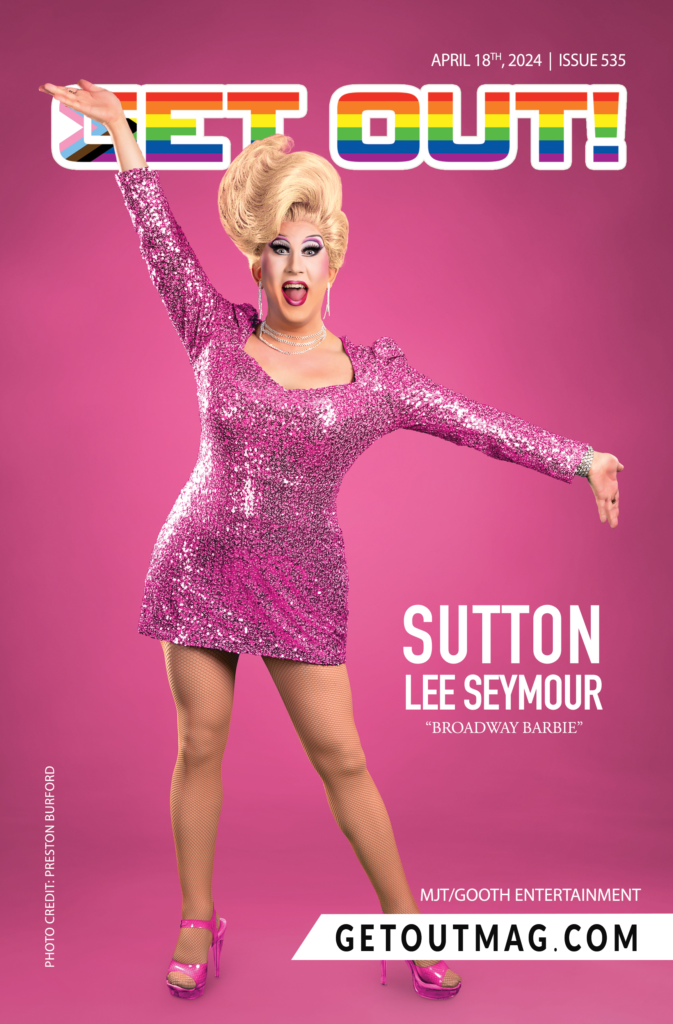Sea Tea
Pouring Tea with Michael Fesco
by Sean Meriwether
The name Michael Fesco was synonymous with New York gay nightlife. In 1969 the party promoter originated Tea Dance, an event that grew from a single club into a global multi-million dollar franchise. Although he has no connection to the current parties other than the concept he continues to have his hand in the game. His event, Sea Tea: New York’s Only Gay Sailing Tea Dance, sails into its 16th season this summer and continues to deliver the Fesco experience.
His promoting career began serendipitously in 1969 when Fesco, a Broadway chorus boy, was between gigs. A friend offered him a place to stay and a summer job as general manager of Cherry Grove’s Beach Hotel and Club. He immediately saw potential in The Boom Boom Room, “The ugliest club I’ve ever seen, but it could fit 1,000 people, easy,” he claimed. He set out to create Fire Island’s first disco at a time when gay liberation was exploding on the streets of Manhattan.
Armed with a staple gun and rolls of industrial tinfoil picked up cheap on Canal Street, the visionary transformed the barren space into a glistening landscape. He replaced the antique jukebox with a live DJ who could establish and maintain the crowd’s mood with a sweaty blend of dance music. The final alteration was the club’s name. The un-insulated room could become a sauna in the sweltering heat and he wanted to inspire a cooler first impression. He lifted “The Ice Palace” from a story by F. Scott Fitzgerald. It would be the first of many literary ties; both the Ice Palace and his club Flamingo appeared in many novels, most notably in Andrew Hollaran’s classic Dancer from the Dance and in the work of co-Violet Quill member, Felice Picano.
The Ice Palace opened its doors to New York’s gay elite. They filled the dance floor on Friday and Saturday nights and turned the club into the place to see and be seen. The novice promoter wanted to build on his success and capture the Sunday audience before they returned to Manhattan, but he needed a concept to lure them away from the Island’s infamous house parties.
Fesco took inspiration from an earlier trip to England where the gay locals had reinvented high tea with Bloody Marys. He imported the custom with a twist; he rented the largest silver tea service he could find along with bone china cups and saucers. The tea was just a hook, but he found it amusing that, “some of the queens actually drank the stuff!” He enrolled a bevy of Cherry Grove’s famous drag queens to pour out. They arrived in ornate ball gowns with entourages in tow, adding a flamboyant gentility to the weekly service. The competition for who would hold the weekly spotlight became so fierce that Fesco was forced to put them on a schedule to avoid fights between the sparring divas.
Sunday Tea immediately became a “must do” and the club was invaded by boatloads of day trippers. At 4pm the population of The Ice Palace swelled by thousands and became so crowded that Fesco was forced to hide out until the last ferry returned to the mainland. Then he would dance with the regulars until dawn or until the police came to break up the party. Even after the Stonewall riots it was still illegal for 2 men to dance together—a woman had to dance with them—and the local police appeared frequently to make sure the men were “keeping it straight.”
After 5 successful years on Fire Island it was a natural progression to bring the summer party to Gotham. In 1974 Fesco leased 10,000 feet of raw space in SoHo. The industrial neighborhood was completely desolate after 6pm. He laughed, “You could shoot a cannon down Broadway and not hit a thing.” He took the 2nd floor for “a measly” $1,350 per month. The key feature of the loft was the absence of support pillars, which created a huge open space. He had carte blanche to “set the stage.” Fesco took a cue from his summer stock background where he had to produce a new play or musical every weekend. The club was open Wednesday through Sunday night’s Tea Dance, then Monday morning he would strip the club down to the bare walls and start over. The effort to outdo each lavish production forced him to think creatively and up the ante.
Fesco had developed an elite audience on Fire Island and envisioned Flamingo as the first disco catering specifically to the gay A-List. He felt he was opening his home to his friends and wanted to avoid the club being overpopulated by strangers crashing the party. Membership to Flamingo was by invitation only; the $45 fee gave you entry to a very special universe.
Along with the weekly transformations Fesco began hosting theme parties. He started the Black Party, which was inspired by the Westside leather bars. DJ Richard Rivera would spin down-and-dirty music that set the mood for the evening. The crowd dressed in black and obeyed the power of the beat. He developed the contrasting White Party as a winter wonderland where, “everything was gorgeous and covered in shimmering white.” DJ Howard Merritt mirrored the lighter mood with buoyant disco.
It was his use of music that set the club apart from the competition. Flamingo was a Cathedral of Sound and the DJ led the parishioners through nighttime services. The promoter recruited the best DJs, each of their musical styles so distinctive that “you could hear two beats and know who was playing that night”, Fesco said. Any song that caught the club’s ear would be blazing up the charts in the following weeks. Flamingo at its height was a taste-maker, attracting the famous and infamous, both gay and straight, and foreshadowed the antics of Studio 54.
The disco radiated for 7 glorious years and set the standard for New York nightlife. When fickle crowds migrated to the massive nightclub, The Saint, Fesco was forced to shut the doors. New York felt the loss. Author George Stambolian wrote an obituary for the club to mark the end of an era, claiming, “To have been at Flamingo at the height of its glory was to have imagined oneself, for a night of a moment, at the center of the world.”
Fesco did not sit idle after Flamingo. In 1981 he was brought on to promote Sunday Tea at Studio 54, a club that copied his “members only” policy. Fesco sent opening night invitations to his members, his “Flamingettes”, but word got out of his return. His first party had a line that stretched down 54th Street and spilled onto 8th Avenue.
Sunday nights at Studio 54 were spectacular productions thanks to the deep pockets of the club’s owners, Steve Rubell and Ian Schrager. He continued his annual Black and White Parties but staged them on a grander scale. One memorable Black Party called “A Night Aboard the Titanic” saw Peter Allen wetting down the floor with a fire hose. When the lavish Titanic “sank”, a set opened to reveal Eartha Kitt and a full orchestra.
Although he could not recapture the intimacy of Flamingo in the disco the tradition of using a DJ to set the mood of the party continued. The parishioners came in droves and worshiped until dawn, jettisoning their day-to-day lives for the hedonism of the moment and the music.
Studio 54 closed in 1984 just as AIDS was chewing through Manhattan’s population. More than half of Michael’s friends and Flamingettes perished seemingly overnight. “A generation of the most talented people I ever knew, who would never have the chance to fulfill their dreams,” he lamented.
Fesco avoided opening a new club until a real estate agent acquaintance found him a location he could not refuse. A restaurant at 20 West 20th Street built by signing duo Ashford and Simpson became the next home for Sunday’s Tea Dance. He named the club 20/20 for the unique address. Fesco opened the kitchen in 1988 and added a free buffet to Sunday’s Tea dance, which he continues to do today.
His current party, Sea Tea: New York’s Only Gay Sailing Tea Dance, was kicked off in the summer of 1997. He had originally dismissed the idea pitched to him by The Queen of Heart’s owner, Steven Salsberg; Fesco was not sure he could “get a bunch of queens on a boat.” He was swayed when Salsberg moved the Mississippi-style river boat to the West Side’s Pier 40, just below Christopher Street. The first year saw the dancers return and they have been coming onboard every summer since.
Sea Tea is hosted every Sunday from June to September with a double sailing on Pride weekend. The traditions that he created over 43 years of Tea continue with a free dinner, a drag queen performance, and most importantly, the music. DJs that Fesco has worked with or discovered over the course of his career spin each Sunday night and the Cathedral of Sound attracts its parishioners, including some of the original Flamingettes, who dance through the night.
Having always been a patron of the community, Fesco hosts a number of charitable events and fundraisers for many local gay organizations, including: AVP Anti-Violence Project, Heritage of Pride, NYC Gay Men’s Chorus, Gay Officers Action League, Team New York, and Fire Flag. The new season of Sea Tea launches Sunday, June 19th and runs through the end of the summer. A list of dates is available online at www.teadance.com.
Tickets available at:
Village Apothecary – 346 Bleecker @ 10th St.
(212) 807-7566
Steel Gym – 146 W 23rd St. / 6th & 7th Ave.
(212) 352-9876
Delphinium Home – 353 W 47th
(212) 333-7732
Tickets also available on Pier 40 on the day of sailing at 5 p.m.
Sunday, July 1st DJ Cameron
Sunday, July 8th DJ Jonny Mack
Sunday, July 15th DJ James Andersen
Sunday, July 22nd DJ Phillip Kimball
Sunday, July 29th DJ Steve Sidewalk
Sunday, Aug. 5th DJ Corey Craig
Sunday, Aug. 12th DJ Eddie Cruz
Sunday, Aug. 19th DJ Michael Wilson
Sunday, Aug. 26th DJ Reed McGowan
Sunday, Sept. 2nd Latin Cruise
Sunday, Sept. 9th DJ Steve Sidewalk
Sunday, Sept. 16th DJ Randy Bettis
Sunday, Sept. 23rd TBA
Sunday, Sept. 30th DJ Robbie Leslie
By Sean Meriwether






